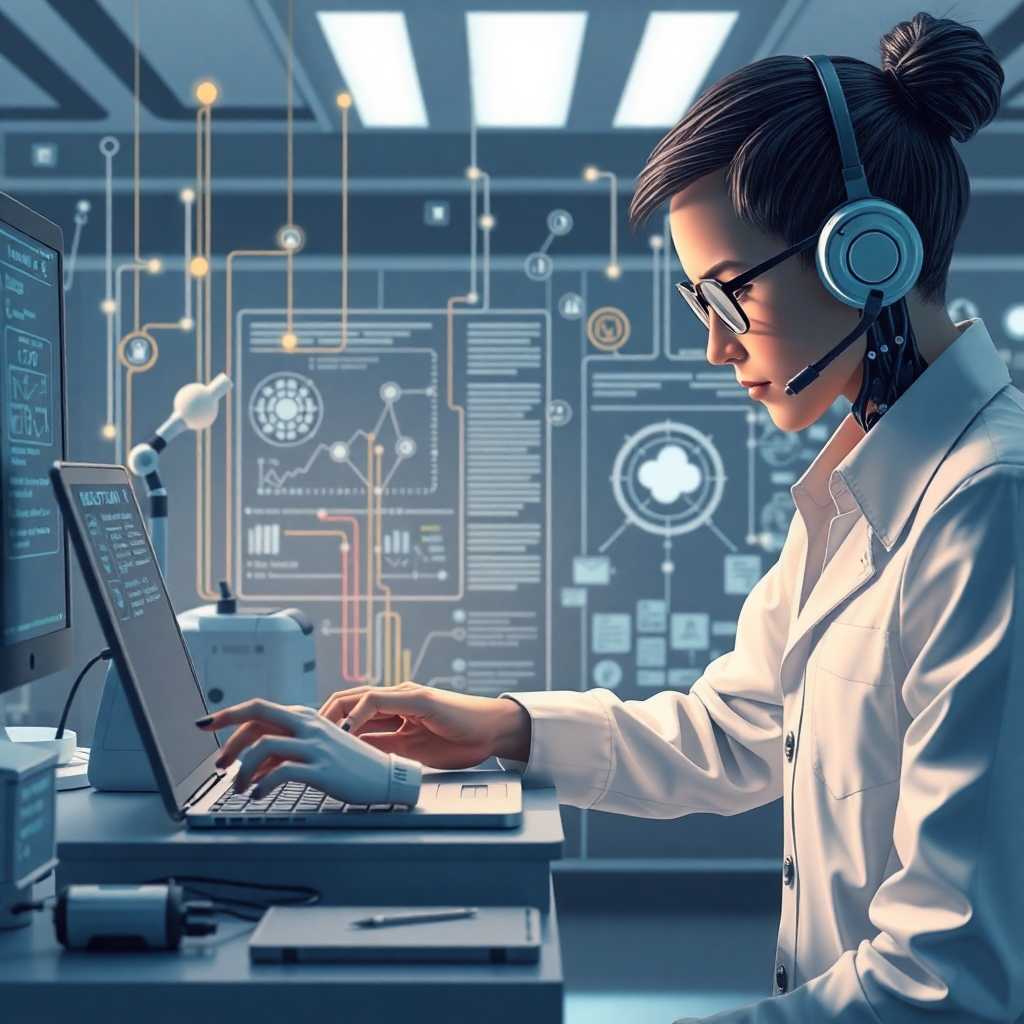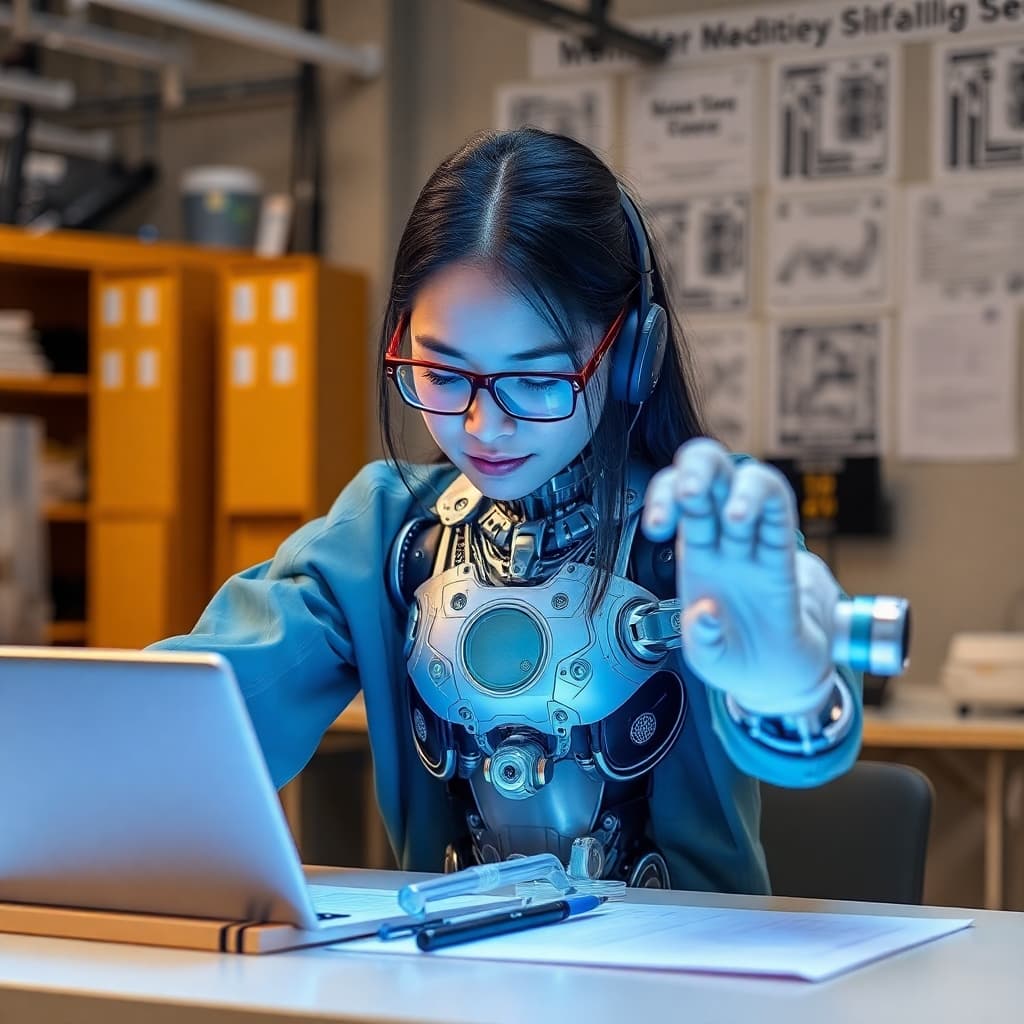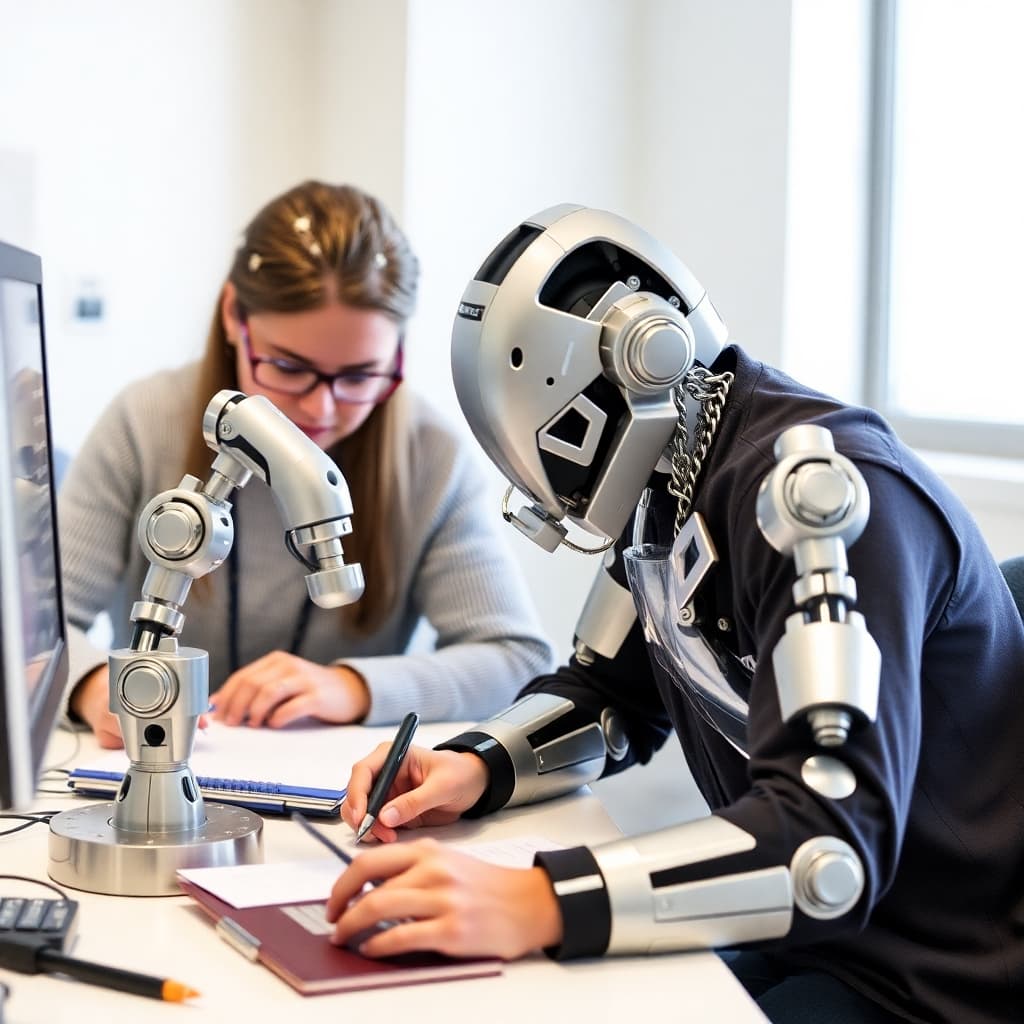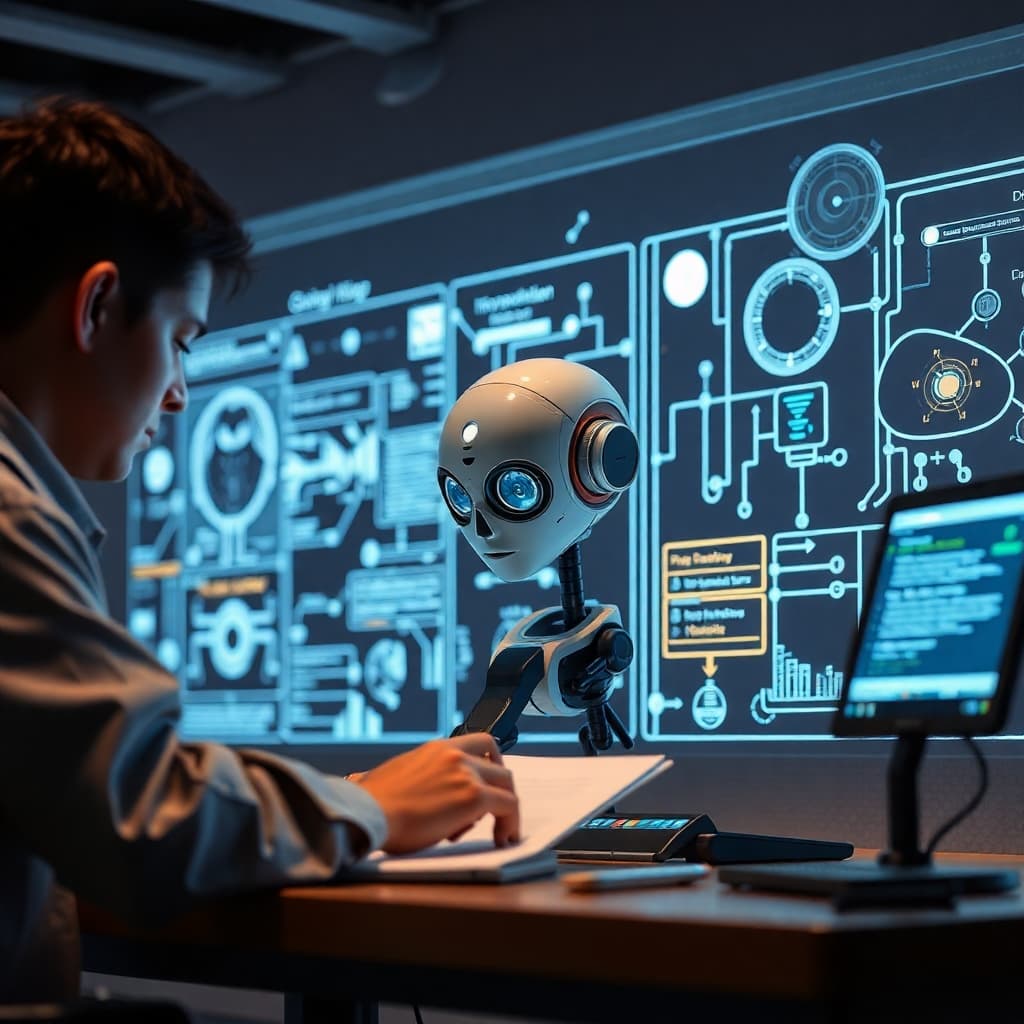AI in Collaborative Learning: Fostering Teamwork in the Digital Classroom

In today's interconnected world, the ability to work effectively in teams is more crucial than ever. As education evolves to meet the demands of the 21st-century workplace, collaborative learning has taken center stage. Artificial Intelligence (AI) is now playing a pivotal role in enhancing these collaborative experiences, creating more engaging, efficient, and equitable group learning environments. This article explores how AI is reshaping collaborative learning and preparing students for the future of teamwork.
The Importance of Collaborative Learning
Collaborative learning offers numerous benefits:
- Enhanced Problem-Solving: Diverse perspectives lead to more creative solutions.
- Improved Communication Skills: Regular group work hones verbal and written communication.
- Increased Engagement: Interactive group tasks often boost student motivation.
- Real-World Preparation: Teamwork in school mirrors collaborative workplace environments.
However, traditional collaborative learning faces challenges such as unequal participation, difficulty in assessing individual contributions, and the logistics of group formation and management. This is where AI comes in, offering innovative solutions to these long-standing issues.
AI-Enhanced Collaborative Learning Techniques
1. Intelligent Group Formation
AI algorithms can create optimal student groups based on various factors:
- Skill Complementarity: Forming teams with complementary strengths and weaknesses.
- Learning Style Compatibility: Grouping students with compatible learning approaches.
- Interest Alignment: Matching students with similar topic interests for projects.
- Diversity Consideration: Ensuring diverse perspectives within each group.
2. Real-Time Collaboration Monitoring
AI tools can monitor group interactions and provide valuable insights:
- Participation Analysis: Tracking individual contributions to ensure balanced participation.
- Sentiment Analysis: Gauging the emotional tone of interactions to identify potential conflicts early.
- Topic Modeling: Analyzing discussion content to ensure relevance and depth.
- Progress Tracking: Monitoring project milestones and alerting when groups fall behind schedule.
3. Intelligent Discussion Facilitation
AI can enhance the quality of group discussions:
- Automated Moderator: An AI bot that asks probing questions to deepen discussions.
- Fact-Checking Assistant: Real-time verification of claims made during discussions.
- Language Translation: Breaking down language barriers in international collaborations.
- Summarization Tools: Providing concise summaries of lengthy discussions for quick review.
4. Adaptive Group Challenges
AI can create and adjust collaborative tasks based on group dynamics:
- Dynamic Difficulty Adjustment: Modifying task complexity based on the group's collective performance.
- Role Assignment: Suggesting optimal role distribution within the group based on individual strengths.
- Personalized Sub-Tasks: Creating individualized components within a group project to ensure everyone is appropriately challenged.
5. Peer and Self-Assessment Support
AI can facilitate more accurate and fair assessment in collaborative settings:
- Contribution Quantification: Objectively measuring individual contributions to group work.
- Peer Review Guidance: Providing rubrics and suggestions for constructive peer feedback.
- Self-Reflection Prompts: Generating personalized questions to encourage meaningful self-assessment.
6. Virtual Collaboration Spaces
AI-powered virtual environments can enhance remote collaborative learning:
- Intelligent Virtual Classrooms: Spaces that adapt to group needs, like automatically creating breakout rooms.
- Avatar-Based Interactions: Using AI to create more engaging and expressive virtual representations of students.
- Smart Document Collaboration: Tools that can suggest edits, resolve conflicts, and track changes in real-time.
Implementing AI-Enhanced Collaborative Learning
To effectively integrate AI into collaborative learning:
- Start with Clear Objectives: Define what you want to achieve with AI-enhanced collaboration.
- Choose Appropriate Tools: Select AI tools that align with your educational goals and student needs.
- Provide Adequate Training: Ensure both educators and students are comfortable with the AI tools.
- Encourage AI-Human Balance: Use AI to enhance, not replace, human interaction and creativity.
- Regularly Assess and Adjust: Continuously evaluate the effectiveness of AI tools and be ready to make changes.
The Future of AI in Collaborative Learning
As AI technology advances, we can anticipate even more innovative applications:
- Emotion-Aware Group Dynamics: AI systems that can detect and respond to group emotional states, suggesting interventions to improve collaboration.
- Cross-Cultural Collaboration Enhancement: Advanced AI that can navigate and mediate cultural differences in global student collaborations.
- Augmented Reality (AR) Collaboration: AI-powered AR environments for immersive, hands-on collaborative experiences.
Ethical Considerations
While integrating AI into collaborative learning, it's crucial to address ethical concerns:
- Data Privacy: Ensure that student interaction data is collected and used ethically.
- Algorithmic Bias: Regularly audit AI systems for potential biases in group formation or assessment.
- Transparency: Make sure students understand how AI is being used in their collaborative experiences.
- Inclusivity: Ensure that AI tools are accessible to all students, including those with disabilities.
Conclusion
AI is ushering in a new era of collaborative learning, one that promises to be more engaging, equitable, and effective. By leveraging AI technologies, educators can create collaborative experiences that not only enhance academic learning but also develop crucial teamwork skills that students will carry into their future careers.
As we continue to explore and refine AI-enhanced collaborative learning, we must approach its implementation thoughtfully, always keeping the focus on fostering meaningful human connections and interactions. When used wisely, AI can be a powerful tool in creating collaborative learning environments that prepare students for the complex, interconnected challenges of the 21st century.
Embrace the potential of AI in collaborative learning, but remember that the heart of collaboration remains human creativity, empathy, and shared purpose. Let AI be the facilitator that allows these essential human qualities to flourish in our digital classrooms.
Table of Contents
- AI in Collaborative Learning: Fostering Teamwork in the Digital Classroom
- The Importance of Collaborative Learning
- AI-Enhanced Collaborative Learning Techniques
- 1. Intelligent Group Formation
- 2. Real-Time Collaboration Monitoring
- 3. Intelligent Discussion Facilitation
- 4. Adaptive Group Challenges
- 5. Peer and Self-Assessment Support
- 6. Virtual Collaboration Spaces
- Implementing AI-Enhanced Collaborative Learning
- The Future of AI in Collaborative Learning
- Ethical Considerations
- Conclusion
Related Posts

Discover how AI is transforming educational assessment, moving beyond traditional testing to provide more accurate, comprehensive, and fair evaluations of student learning.

Explore how AI is being used to develop emotional intelligence in students, creating more empathetic, self-aware, and socially skilled learners for the 21st century.

Discover how AI is breaking down barriers in education, providing personalized support for students with diverse needs and learning differences.

Discover how AI is transforming language education, making it more accessible, personalized, and effective for learners worldwide.

Discover how artificial intelligence is revolutionizing study methods, helping students learn more effectively and retain information longer.

Explore how AI is revolutionizing Science, Technology, Engineering, and Mathematics education, preparing students for the technological challenges of the future.